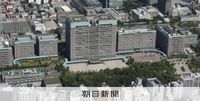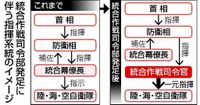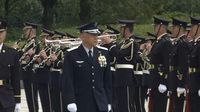The establishment of Japan's Joint Operations Command on March 24, 2025, marks a significant shift in the country’s defense strategy, unifying the command structure of the Ground, Maritime, and Air Self-Defense Forces. Formed at the Ministry of Defense in Tokyo, the command aims to enhance Japan’s responsiveness and coordination in the face of various security challenges, including military actions from neighboring countries and large-scale disasters.
With the initial staffing of approximately 240 personnel, the newly appointed commander, Air General Koichiro Minami-Kumo, emphasized this initiative as a response to pressing national security needs. "A new history is steadily advancing," he stated during the inauguration event, outlining the command’s role in ensuring effective military readiness and cooperation with U.S. forces stationed in the region.
The Joint Operations Command was a key element outlined in the three security documents ratified by the Japanese government at the end of 2022. These documents underscore the necessity of adapting Japan’s defense capabilities to emerging threats, particularly those posed by China and North Korea. With the advent of multifaceted threats—ranging from cyberattacks to disinformation campaigns—the command is structured to better address such complexities. It is intended to enable seamless operations that respond efficiently from peacetime through to emergency situations.
Prior to this restructuring, operations were managed separately by the three branches of the Self-Defense Forces, with command heavily dependent on the Chairman of the Joint Staff Council, who often faced overwhelming responsibilities. Yoshida Yoshihide, a Defense Ministry official, noted past issues where such concentration of duty led to significant risks, citing, "There have been cases where the Joint Staff Chief was overworked and collapsed. Concentrating responsibilities and duties on one person is a risk." Thus, the development of a dedicated command is seen as essential to prevent similar occurrences and facilitate more effective leadership during crises.
Particularly in light of recent events such as the Great East Japan Earthquake in 2011, lessons learned indicate that rapid and coordinated responses are crucial in disaster management scenarios. The new command aims to eliminate delays in operational authority, allowing for immediate engagement with incidents as they arise.
As tensions rise in the region, the Joint Operations Command will also liaise directly with the commanders of U.S. Indo-Pacific forces, enhancing the interoperability between Allied armed forces. This collaboration is increasingly vital in an environment where military engagements, including potential responses to North Korean provocations, may demand rapid and effective combined operation capabilities.
The command is expected to grow further, with an anticipated increase in personnel to 280 by the end of the next fiscal year, as Japan ramps up its readiness in both defense and disaster response capabilities. General Minami-Kumo aims to promote a defense structure that not only reacts to threats but can proactively manage them with efficiency.
This initiative underscores Japan’s ongoing evolution in defense policy, particularly after its recent historical shifts towards a more assertive military doctrine. It reflects a commitment to maintaining national security within a framework that acknowledges the complexities of modern geopolitical risks. As the operational capacity of the Joint Operations Command expands, so too does the potential for Japan to navigate the challenges presented by evolving security landscapes in the Asia-Pacific region.
In this context, the role of the commander will be essential not only in overseeing military readiness but in enhancing collective defense strategies with international partners. The delineation of responsibilities now allows the commander to focus on military operations without the extensive burden previously associated with administrative roles related to joint staff tasks.
Crucially, the Joint Operations Command will integrate a comprehensive surveillance approach that includes considerations for cyber threats and disinformation campaigns that do not immediately escalate to kinetic military actions. Thus, creating a flexible and responsive system capable of addressing grey-zone contingencies is a primary goal of the new command structure.
In the wake of this transformation for Japan’s Self-Defense Forces, citizens and military personnel alike look forward to a more unified and coordinated approach to national defense, one that is equipped to handle both traditional military challenges and the intricacies of modern warfare.









